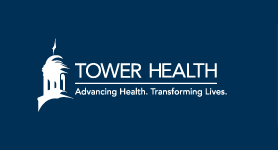Cost-Effectiveness Analysis of Endoscopic Ultrasound-Guided Biliary Drainage Using a Lumen-Apposing Metal Stent vs. Endoscopic Retrograde Cholangiopancreatography as First Line Treatment for Malignant Distal Biliary Obstruction
Document Type
Abstract
Publication Date
6-1-2024
Abstract
Institutions: Brigham and Women's Hospital, USA; UPMC, USA; Reading Hospital, USA; Merit Health Wesley, USA; King Edward Medical University, Pakistan; Geisinger Wyoming Valley Medical Center, USA; Mercy Hospital Jefferson, USA; UPMC, USA; Nishtar Medical University, Pakistan; Essen Healthcare, USA. Disclosure compliance: I understand. Participant disclosure: Muhammad Haseeb: NO financial relationship with a commercial interest; Sandesh Parajuli: NO financial relationship with a commercial interest; Aamir Saeed: NO financial relationship with a commercial interest; Maham Waqar: NO financial relationship with a commercial interest; FNU Faheela: NO financial relationship with a commercial interest; Muhammad Kamal: NO financial relationship with a commercial interest; Umar Hayat: NO financial relationship with a commercial interest; Zubair Khan: NO financial relationship with a commercial interest; Sultan Mahmood: NO financial relationship with a commercial interest; Christopher Thompson: Board Membership: Bariendo, ELLES, Enterasense Ltd, EnVision Endoscopy, GI Windows, Society for Metabolic and Bariatric Endoscopy, Inc, Xenter; Consulting: Boston Scientific, Medtronic, Endoquest Robotics, Fractyl, Fujifilm, GI Dynamics, Lumendi, Olympus, Softac, USGI Medical; Grant/Research Support: Boston Scientific, Endoquest Robotics, ERBE, Fractyl, Fujifilm, GI Dynamics, Lumendi, Olympus, USGI Medical, Apollo Endosurgery; Stock Shareholder: Bariendo, ELLES, Enterasense, EnVision Endoscopy, GI Windows, Softac, Xenter. Introduction: Endoscopic ultrasound (EUS) guided biliary drainage using the AXIOS lumen apposing metal stent (LAMS) and endoscopic retrograde cholangiopancreatography (ERCP) with metal stents are two modalities for biliary drainage (BD) in patients with unresectable malignant distal biliary obstruction (MDBO). Our study aimed to synthesize available data on the relative safety and efficacy of EUS compared to ERCP for BD in patients with MDBO and evaluate their cost-effectiveness. Methods: A systematic search of 4 major databases was performed to retrieve randomized controlled trials (RCTs) comparing the safety and efficacy of EUS to ERCP for BD in MDBO. Our outcomes of interest were technical success, clinical success, adverse events, re-intervention rate, and stent patency time. Outcomes were first meta-analyzed for probabilities, followed by extraction of their costs and quality of life (QOL) data from published literature. A state transition Markov cohort model was then constructed from the U.S. healthcare system's perspective. The base case was a patient with locally advanced unresectable cancer with MDBO. Costs were reported in U.S. dollars ($) adjusted to the year 2023 using the consumer price index with health outcomes recorded in quality-adjusted life years (QALYs). A two-year time horizon with a cycle length of one month with the application of a 3% discount rate was utilized. The main outcome measure was the incremental cost-effectiveness ratio (ICER) with a willingness-to-pay threshold of $100,000/QALY. One-way and probabilistic sensitivity analyses were also performed. Results: At 2 years, EUS demonstrated higher effectiveness than ERCP (0.65 QALY vs. 0.64 QALY). However, EUS did not meet the conventional cost-effectiveness standards, with an ICER of $149,853/QALY- exceeding the WTP threshold of $100,000/QALY. The additional cost for EUS was calculated to be $2,227 per patient. On probabilistic sensitivity analysis, ERCP was found to be a preferred strategy compared to EUS, with a probability of 85% using 10,000 iterations. Price threshold analysis indicated that for EUS to be deemed cost-effective, the price of AXIOS LAMS would need to be at the lower end of the current price range i.e., $3800 compared to $4500 in our base case. Furthermore, sensitivity analysis revealed that in scenarios where ERCP is associated with a high technical failure rate (15%), EUS would become the preferred cost-effective approach. Conclusion: Despite the higher effectiveness of EUS-guided LAMS, ERCP remains the preferred strategy for initial biliary decompression in patients with MDBO on the cost-effectiveness platform. EUS can be a cost-effective option in patients with an expected higher rate of technical failure with ERCP (15%) or if the cost of AXIOS LAMS is decreased by 15%. [Formula presented] [Formula presented]
Publication Title
Gastrointestinal Endoscopy
Volume
99
Issue
6 Supplement
First Page
AB651
Last Page
AB651
Recommended Citation
Haseeb, M., Parajuli, S., Saeed, A., Waqar, M., Faheela, F., Kamal, M., Hayat, U., Khan, Z., Mahmood, S., & Thompson, C. (2024). Cost-Effectiveness Analysis of Endoscopic Ultrasound-Guided Biliary Drainage Using a Lumen-Apposing Metal Stent vs. Endoscopic Retrograde Cholangiopancreatography as First Line Treatment for Malignant Distal Biliary Obstruction. Gastrointestinal Endoscopy, 99 (6 Supplement), AB651-AB651. https://doi.org/https://doi.org/10.1016/j.gie.2024.04.1651


Comments
Digestive Disease Week held 2024-05-18 to 2024-05-21 in Washington, USA.